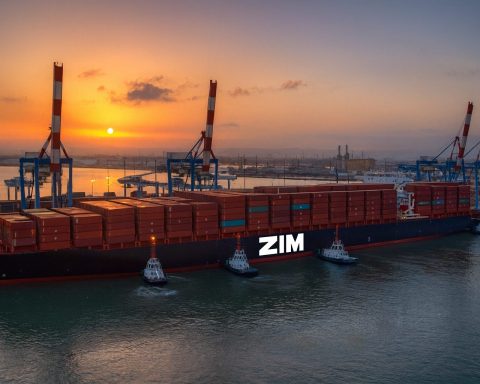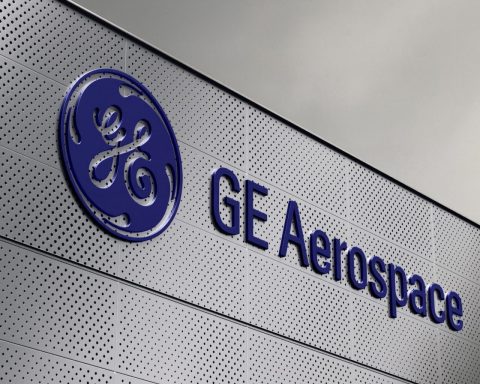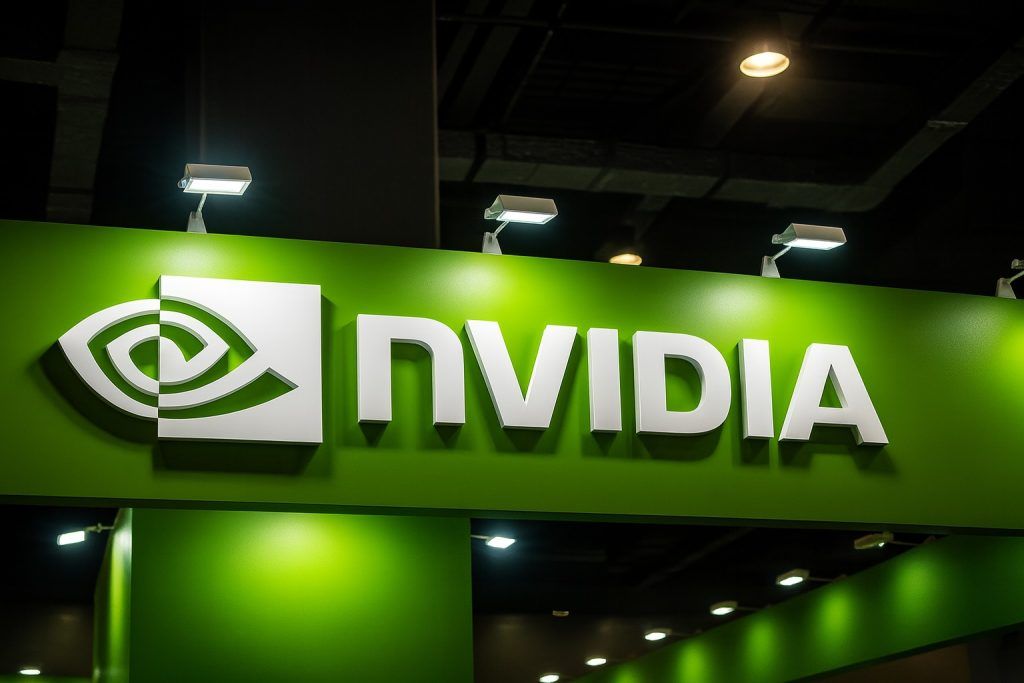Key Facts (as of Nov 2, 2025):
- Meta’s Q3 2025 revenue was a record $51.24 billion (up ~26% YoY) [1], but net income plunged ~83% to $2.71 billion (EPS $1.05 vs $6.03 last year) due to a one-time $15.93 billion tax hit [2].
- META stock plunged on the earnings news: shares fell about 11% after hours on Oct. 30 (to ~$666) and dipped further to about $658 on Oct. 31 [3].
- Spending and CapEx are surging. Meta lifted its 2025 capex forecast to $70–72 billion (from $66–72B) and said 2026 capex will be “notably larger” [4] [5]. To fund this AI infrastructure buildout, the company is raising up to $30 billion in bonds – its largest-ever debt offering [6].
- Wall Street remains mostly bullish: ~85% of analysts rate META a “Buy”/“Strong Buy,” with 12-month targets roughly in the $830–$880 range [7] [8] (implying 25–30% upside). MarketBeat cites a consensus target ~$827.60 (≈+27% vs current) [9].
- Regulatory pressures are rising. The EU recently fined Meta €200 million under the Digital Markets Act (a penalty Meta decried as an unfair “tariff”), and EU regulators are probing possible breaches of the Digital Services Act (potential fines up to 6% of revenue) [10]. In the U.S., a high-profile FTC privacy/antitrust case (over Instagram/WhatsApp) is pending trial in 2026 [11].
- Share price: Meta closed around $675 on Friday, Oct. 31 [12]. That level is about +25% above the start of 2025 [13] and near the stock’s multi-year highs, giving META a market cap ~ $1.8 trillion [14].
Q3 2025 Earnings Recap
Meta’s October earnings (reported Oct 29 after the close) painted a mixed picture. The company delivered strong revenue growth – $51.24 B for Q3, up 26% year-on-year [15] – led by robust advertising demand and rising user engagement. (Daily active users across Facebook, Instagram, WhatsApp and others hit ~3.54 billion, +8% YoY [16].) Ad impressions rose ~14% and prices ~10%, fueling the gain. However, profitability collapsed: reported net income was only $2.71 B (EPS $1.05), versus $15.7 B (EPS $6.03) a year earlier [17]. This huge drop was almost entirely due to a one-time $15.93 billion tax charge from the U.S. corporate minimum-tax law (the “One Big Beautiful Bill” act) [18]. Management noted this tax is non-cash – without it, Q3 earnings would have been ~$18.6 B (EPS ~$7.25) [19] [20]. CFO Susan Li emphasized the charge will actually reduce Meta’s future cash taxes, saying it “positions us favorably from a cash tax standpoint” [21] (the effective tax rate excluding the charge would have fallen from 87% to ~14%).
Despite the tax distortion, core operations showed strength. Meta’s Family of Apps segment (ads & social networking) reported ~$50.08 B in revenue for Q3 [22]. Daily engagement metrics are healthy – for example, Mark Zuckerberg noted AI-driven recommendations have already boosted user engagement: “AI-powered recommendation systems have increased time spent on Facebook by 5%, on Threads by 10%, and boosted [Instagram] video viewing by more than 30%” [23]. Meta’s Reality Labs unit (AR/VR hardware and metaverse) remains unprofitable: it generated only $470 M in revenue and an $4.43 B operating loss in Q3 [24]. Management expects RL revenue to dip in Q4 due to product timing, and losses will stay large (the core advertising business is still funding those losses).
In its Q3 press release, Meta provided updated guidance. For Q4 2025 it forecasts $56–59 B in revenue [25] (midpoint ~19% YoY growth), roughly in line with analyst expectations. Full-year 2025 expenses are now seen at $116–118 B [26] (≈23% growth), reflecting the AI investment ramp. And notably, capital expenditures for 2025 were reaffirmed at $70–72 B [27] (versus a prior $66–72B outlook). Meta warned that 2026 capex will be “notably larger” than even that level [28], as it accelerates data center and infrastructure spending. CEO Zuckerberg and CFO Li stressed in the call that the company is “aggressively front-loading building capacity” for future AI breakthroughs [29] [30]; Li pointed out that next year the biggest expense drivers will be infrastructure and employee compensation (especially hiring AI specialists) [31] [32].
Reacting to the results, Wall Street’s tone was cautious. Meta shares were already at record levels into late October, so some analysts said the huge tax charge and spending outlook rattled investors. Aaron Kessler of Seaport Research remarked that the “one-time tax charge and heavy spending were the main reasons investors sold off the stock” [33]. Goldman Sachs called Q3 a “mixed quarter,” keeping a Buy rating but cutting its price target to $815 (from $870), noting that Meta’s core ad business remains strong but the high spending cycle could weigh on future profits [34]. Oppenheimer downgraded the stock on Oct. 30, warning of Meta’s “massive spending on AI” and comparing it to the earlier Metaverse bet that yielded uncertain returns [35] [36]. In Oppenheimer’s view, investors may need clarity on 2027 and beyond – they note Meta now trades around 27x 2026-27 earnings [37], so any slowdown could be punished.
AI Investments and Major Initiatives
Meta is plowing massive capital into AI and related projects, which is core to the narrative right now. On Oct. 30 Reuters reported that Meta plans a $30 billion bond offering – the company’s largest-ever debt sale – to help fund its AI data centers and computing infrastructure [38]. This move was explicitly tied to the intense AI buildout: management already said 2026 capital spending will far exceed 2025’s ~$70–72 B capex [39]. Most of that money will go into new server farms and chips for AI training. For example, Meta recently struck a $27 billion joint venture with Blue Owl Capital to build its massive new “Hyperion” data center in Louisiana [40]. Under that deal (announced Oct. 27), Blue Owl funds will finance ~80% of the project (~$20B) while Meta contributes land and management [41] [42]. CFO Li called the JV “a bold step forward” for Meta’s AI plans [43].
Meta is also recruiting aggressively in AI. CEO Zuckerberg reportedly led a blitz to hire AI experts (even offering up to $100 million signing bonuses), while cutting some internal R&D roles to streamline its Superintelligence Labs [44]. On Oct. 27 TS2 noted that Meta is even acquiring AI-chip startup Rivos for roughly $2 billion [45], aiming to design its own training chips. Meanwhile, the company is rolling out new consumer hardware as part of its AI strategy. Its latest launch – Ray-Ban Meta “Display” smart glasses (AR eyewear with a built-in screen) – sold out within 48 hours of release [46]. Zuckerberg touted these glasses as a step toward “personal superintelligence,” since they overlay AI-driven info in real time for users [47] [48].
These mega-investments are drawing investor scrutiny. As Reuters noted, building all this AI capacity is expensive: Meta said employee compensation (particularly for AI talent) and data center costs will be the top expense drivers next year [49]. One TS2 analysis summarized the bullish view – Meta’s aggressive AI build “positions [it] well for the future” – but cautioned that the “real test” will be converting these “massive outlays into steady, predictable returns” [50]. In other words, success hinges on whether the AI push eventually boosts user growth, engagement and ad monetization enough to offset the soaring costs.
Market Reaction and Analyst Outlook
After earnings, Meta’s stock dipped (as noted above) but some market commentators saw it as a buying opportunity given the strong top-line. A Reuters note quoted Oppenheimer saying the drop was “confusing” to him in light of robust ad growth [51]. Technical signals are mixed: one analysis predicted META might open around $656 on Monday (about 1–2% above Friday’s close) [52], but cautioned that resistance lies near the prior peaks (~$691–$691 on Oct. 29 [53]).
Overall analyst sentiment remains optimistic. As TS2 reported on Oct. 27, over 40 analysts rate Meta a Buy, and consensus price targets sit in the $825–$900 range (10–20% above current levels) [54] [55]. For example, TipRanks shows an average 12-month target of ~$847 (≈31% upside) [56], while MarketBeat’s consensus target is ~$827 (≈28% upside) [57]. Last week’s reports included an Oppenheimer target of $825 and HSBC’s target raised to $900 [58]. In sum, many analysts still expect META to trade in the high-$700s to $800s over the next year, assuming double-digit revenue growth continues. (Of course, targets vary – the lowest forecasts are near $605 [59], which would mark an 8% decline, but the high forecasts exceed $1,100.)
On Monday, Meta shares will likely respond to both these valuations and any weekend news flow. No fresh data on Meta specifically has come out over the Nov 1–2 weekend. Macro trends could help: technology stocks are generally supported by easing inflation and expected Fed rate cuts [60], while digital ad spending is rebounding. If the market outlook is stable, Meta’s strong fundamentals (large user base, high-margin ads, huge cash reserves ~$44B [61]) could drive the stock back up. Conversely, if investors remain spooked by the elevated spending, Monday could see continued volatility.
In our view, the key will be execution of the AI strategy and fourth-quarter results. If Q4 revenues meet guidance and the company reiterates long-term growth, confidence may return. A modest rally toward $700+ is plausible if the market treats the pullback as overdone. But if guidance disappoints, META could test support around the mid-$600s (its Oct 30 low was ~$650). Longer term, analysts expect mid-to-high teens percentage annual growth in revenue, which could justify prices above $900 by 2026 once the big capex translates to new products. For now, many investors seem willing to ride through the volatility – as one strategist put it, the “real test” is turning Meta’s massive investments into predictable returns [62].
Regulatory Headwinds and Risks
Investors should keep an eye on regulatory news before markets open Monday. Meta reiterated in its earnings release that it faces “increasing headwinds” from legal changes [63]. In the EU, regulators have already fined Meta €200 M under competition rules, and are investigating Facebook/Instagram under the new Digital Services Act – potential penalties could be huge (up to 6% of global revenue) [64]. In the U.S., Meta is publicly engaged with the FTC’s case over allegedly harmful social media effects on minors; trials are set for 2026 [65] [66]. Any adverse rulings – for example, stricter targeting rules or teen safeguards – could materially impact Meta’s ad business and thus the stock.
One positive note: Meta ended Q3 with a fortress balance sheet. It generated $30.0 B in operating cash flow and ~$10.6 B free cash flow [67], with ~$44.45 B in cash and short-term investments on hand [68]. This cash cushion lets Meta fund its expansion and shareholder returns (it bought back $3.2 B of stock in Q3) even as it spends heavily. It also kept about $80 B in debt, giving financial flexibility. In other words, Meta has the firepower to navigate regulatory turmoil – but such risks could still sap investor enthusiasm in the short run.
Verdict and What to Watch on Monday
In summary, Meta arrives at Monday’s open still dominating social media/ad markets but grappling with big new bets and the associated uncertainties. Key things to watch as the US market opens on Nov 3, 2025: new guidance or comments from EU regulators (the company said an update on its less-targeted ads plan could come as early as now [69]), early trading reaction to big tech sector moves, and any crack in the stock after the recent selloff. Given the data, many experts remain constructive: Meta’s core ad platform is healthy and AI momentum strong, so some see this pullback as a buying opportunity [70] [71]. We therefore keep an eye on the ~$630–650 support zone; a firm break below that (it hasn’t happened yet) could signal a deeper correction. On the upside, a sustained move above ~$700-$720 in the coming days would suggest confidence returning. For those tracking target prices, remember the consensus mid-$800s estimate: reaching that level would require the positive forces (ad growth, AI benefits) to outweigh the negatives (tax charges, capex, regs).
Sources: Meta’s financial filings and earnings release [72] [73]; analyst and news reports from Reuters [74] [75], Economic Times [76] [77], TS2.tech [78] [79] [80], MarketBeat [81], TipRanks [82] and others. All data and quotes are drawn from these sources.
References
1. ts2.tech, 2. ts2.tech, 3. ts2.tech, 4. www.prnewswire.com, 5. www.reuters.com, 6. www.reuters.com, 7. ts2.tech, 8. www.marketbeat.com, 9. www.marketbeat.com, 10. ts2.tech, 11. ts2.tech, 12. www.investing.com, 13. ts2.tech, 14. ts2.tech, 15. ts2.tech, 16. www.nasdaq.com, 17. ts2.tech, 18. ts2.tech, 19. ts2.tech, 20. www.businessinsider.com, 21. www.businessinsider.com, 22. www.prnewswire.com, 23. www.businessinsider.com, 24. www.prnewswire.com, 25. www.prnewswire.com, 26. www.prnewswire.com, 27. www.prnewswire.com, 28. www.prnewswire.com, 29. ts2.tech, 30. www.reuters.com, 31. www.businessinsider.com, 32. www.reuters.com, 33. economictimes.indiatimes.com, 34. economictimes.indiatimes.com, 35. economictimes.indiatimes.com, 36. economictimes.indiatimes.com, 37. economictimes.indiatimes.com, 38. www.reuters.com, 39. www.reuters.com, 40. www.reuters.com, 41. www.reuters.com, 42. www.reuters.com, 43. www.reuters.com, 44. ts2.tech, 45. ts2.tech, 46. ts2.tech, 47. www.businessinsider.com, 48. ts2.tech, 49. www.reuters.com, 50. ts2.tech, 51. economictimes.indiatimes.com, 52. stockinvest.us, 53. stockinvest.us, 54. ts2.tech, 55. ts2.tech, 56. www.tipranks.com, 57. www.marketbeat.com, 58. ts2.tech, 59. www.tipranks.com, 60. ts2.tech, 61. www.prnewswire.com, 62. ts2.tech, 63. www.prnewswire.com, 64. ts2.tech, 65. www.prnewswire.com, 66. economictimes.indiatimes.com, 67. www.prnewswire.com, 68. www.prnewswire.com, 69. www.prnewswire.com, 70. ts2.tech, 71. economictimes.indiatimes.com, 72. www.prnewswire.com, 73. www.prnewswire.com, 74. www.reuters.com, 75. www.reuters.com, 76. economictimes.indiatimes.com, 77. economictimes.indiatimes.com, 78. ts2.tech, 79. ts2.tech, 80. ts2.tech, 81. www.marketbeat.com, 82. www.tipranks.com







